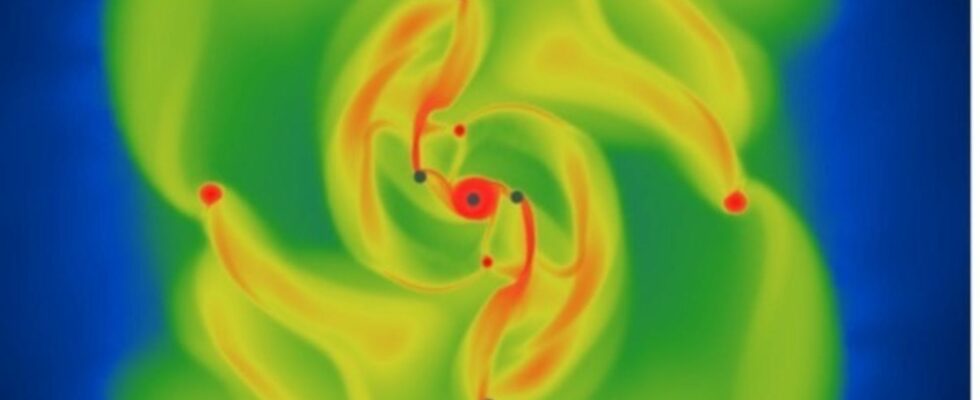The embryos of some planets may be shaped like rugby balls. This new theory would concern the gas giants, i.e. the category of planets Jupiter and Saturn.
What do planets look like in their infancy? For some of them, probably rugby balls or Smarties. This is the surprising conclusion of a study published in the journal Astronomy & Astrophysics on February 6, 2024, spotted by ScienceAlert. Its authors argue that not all planets have necessarily always been round throughout their existence, but that some could be rather flat at the very beginning of their lives.
A protoplanet is an embryonic planet, forming around a star, usually in a protoplanetary disk.
The team conducted a series of computer simulations. “ The vast majority of protoplanets that form in simulations are oblate-shaped spheroids [ndlr : de la même forme que celle d’un ballon de rugby] rather than spherical », Write the scientists in the journal. Their analyzes show that certain protoplanets would therefore essentially be flattened structures, and not spherical as one might have imagined.
Jupiter and Saturn may have started life flattened
The simulations focus specifically on one type of planet: gas giants. We have well-known specimens of this category in the solar system, the enormous Jupiter and Saturn. So it could be, according to this theory, that these two were once much flatter than they are today.

To understand what this new study brings, we must remember that the way in which giant planets form is still relatively poorly understood by scientists. Several training hypotheses exist. In this study, the researchers used one of them, the theory of the disk instability model. She ” suggests that protoplanets form in a short time from the breakup of large rotating disks of dense gas orbiting young stars », summarizes a press release from the University of Central Lancashire detailing the study.
It was in this context that the simulations were carried out, using DiRAC, a supercomputer facility in the UK, to examine how young gaseous planets were formed.
The work around this theory of “Smartie planets” is far from complete. The researchers plan to further improve their calculation models to understand how the environment of the planets affects this astonishing shape.
Subscribe for free to Artificielles, our newsletter on AI, designed by AIs, verified by Numerama!
